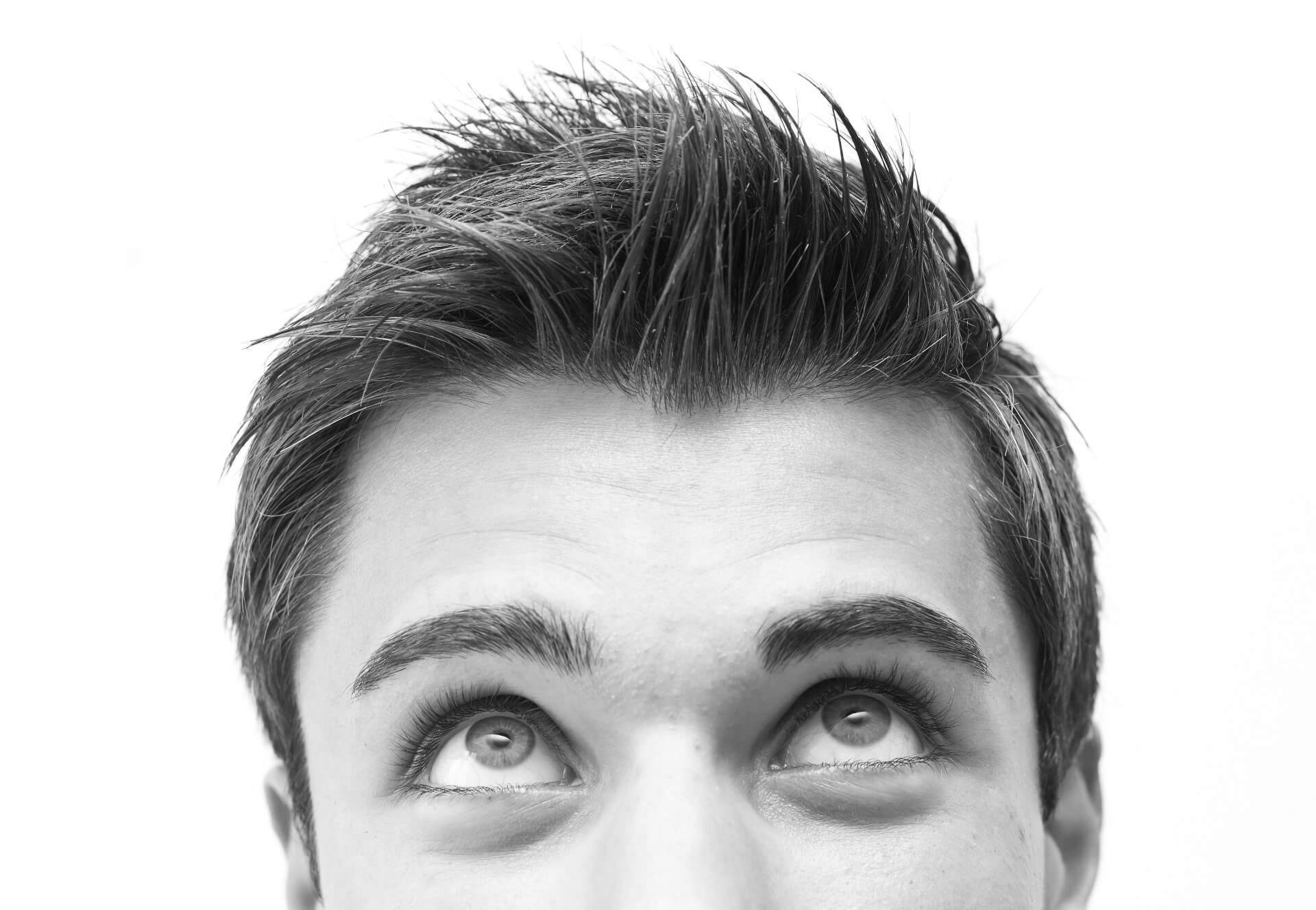Scalp Reduction Surgery in Boston, MA & Providence, RI
Alopecia reduction-also called scalp reduction-is a surgical hair restoration procedure that (1) surgically removes bald scalp, and (2) stretches hair-bearing scalp upward to replace bald scalp that has been removed. In selected patients alopecia reduction is a very effective method of hair restoration when performed by a skilled and experienced physician hair restoration specialist. Depending on individual patient characteristics, alopecia reduction may be performed (1) as the only hair restoration procedure desired by the patient, (2) in combination with hair transplantation to achieve a desired aesthetic effect, or (3) occasionally in combination with the aesthetic surgical procedure called brow lifting to remove frown lines from the forehead and crow’s feet from around the eyes.
Good candidates for alopecia reduction are patients with excellent donor hair on the sides and back of the scalp that can be stretched upward to cover areas of excised bald scalp. A good supply of donor hair is also needed to provide donor grafts for any supplementary hair transplantation. Alopecia reduction may, in selected patients, be carried out by using a scalp extension or scalp expansion device – a technique that stretches hair-bearing scalp skin to provide greater coverage in bald areas.
Indications and Patient Selection Is Scalp Reduction Right for You??
Any non-emergency surgical procedure must be justified by its applicability and ultimate value to the patient. This is especially true for elective cosmetic procedures such as hair restoration. Full and frank discussion between patient and physician hair restoration specialist is essential to determining whether an elective procedure is right for you, the patient.
Scalp reduction can be a very successful approach to hair restoration.
Is it right for you?
A number of factors can bear upon that decision:
- Physical condition-the patient should be in good general health and have no medical conditions that would rule out a surgical procedure.
Degree and pattern of hair loss-the patient and the physician hair restoration specialist should together make the final decision as to whether alopecia reduction is a good choice for hair restoration. In general, alopecia reduction is likely to be most useful in a patient who has a large area of scalp baldness and an adequate supply of good-quality donor hair on the sides and back of the scalp.
Another consideration is the rapidity of alopecia progression and the likelihood that alopecia will significantly progress in the future. These factors will influence the need to consider future hair transplantation to keep pace with an ever-expanding zone of baldness. The patient who undergoes alopecia reduction should be willing and able to have future alopecia reduction and/or hair transplantation and/or correction of surgical complications as the need arises.
- Tightness or laxity of scalp skin-scalp skin that has very little laxity (the ability to stretch) may not be a good foundation for alopecia reduction. The rationale for alopecia reduction is that bald scalp can be surgically removed and hair-bearing scalp skin stretched up to cover the excised area. A substantial degree of scalp skin laxity is required to make the procedure work well.
- The patient’s objectives-what do you, the patient, want hair restoration to accomplish? Your objectives, discussed thoroughly with the physician hair restoration specialist, will be a major factor in determining if alopecia reduction is a good option for you. For example, alopecia reduction may be a good option for a patient who wants to “pull up” all available donor hair to provide dense coverage of the scalp-given that other factors such as scalp laxity are favorable to that decision.
Scal Reduction and Hair Transplantation
Alopecia reduction is often combined with hair transplantation. Hair transplantation may be combined with alopecia reduction to “fine tune” hair restoration in aesthetically sensitive areas, such as the frontal hairline that is not treated with alopecia reduction. Hair transplantation may be necessary in future years to keep pace with continued loss of hair. In younger patients, hair transplantation may be done first to restore the frontal one-third of the scalp, with alopecia reduction reserved for later years if hair loss progresses.
Alopecia reduction surgery can be done before, during or after hair transplantation, as indicated by the needs and wishes of the patient and the assessment of the physician hair restoration specialist. The timing of combined alopecia reduction and hair transplantation can be a critical decision that requires full discussion and understanding between patient and physician hair restoration specialist. The decision must be individualized to the patient, based upon considerations that include the patient’s objectives for hair restoration, cost of multiple procedures, degree of likely progression of hair loss, and the patient’s age as a factor in likely progression of hair loss over a longer or shorter period of time.
Scalp Reduction Techniques
A number of alopecia reduction techniques have been developed. No one technique is adaptable to all patients. Choice of technique is based upon considerations that may include degree of hair loss, scalp laxity, amount and quality of donor hair, and whether hair transplantation is to be a complementary procedure. Alopecia reduction technique is largely a matter of the pattern of scalp incision-for example, “Y” pattern, “star” pattern, “lateral crescent” pattern, etc. The choice of technique and rationale for the choice should be discussed by patient and physician.
Potential Complications and Side Effects
Careful planning and expert surgical skills are required to achieve good results in alopecia reduction. Complications are uncommon but there can be postoperative complications such as scarring at the suture lines, “stretch back” of scalp skin at the excised bald area, and a central midline scar called a slot deformity.




